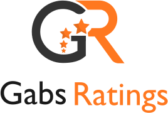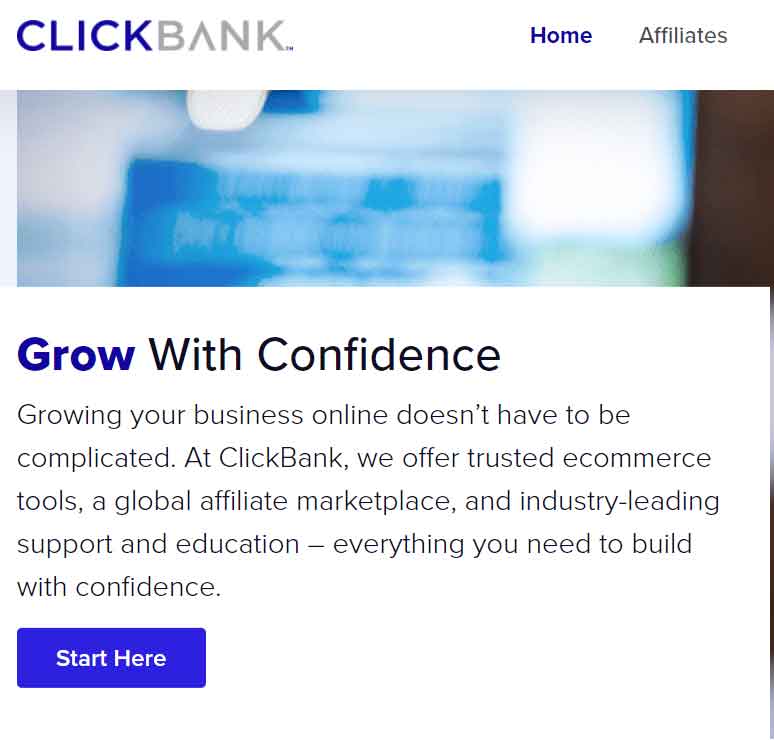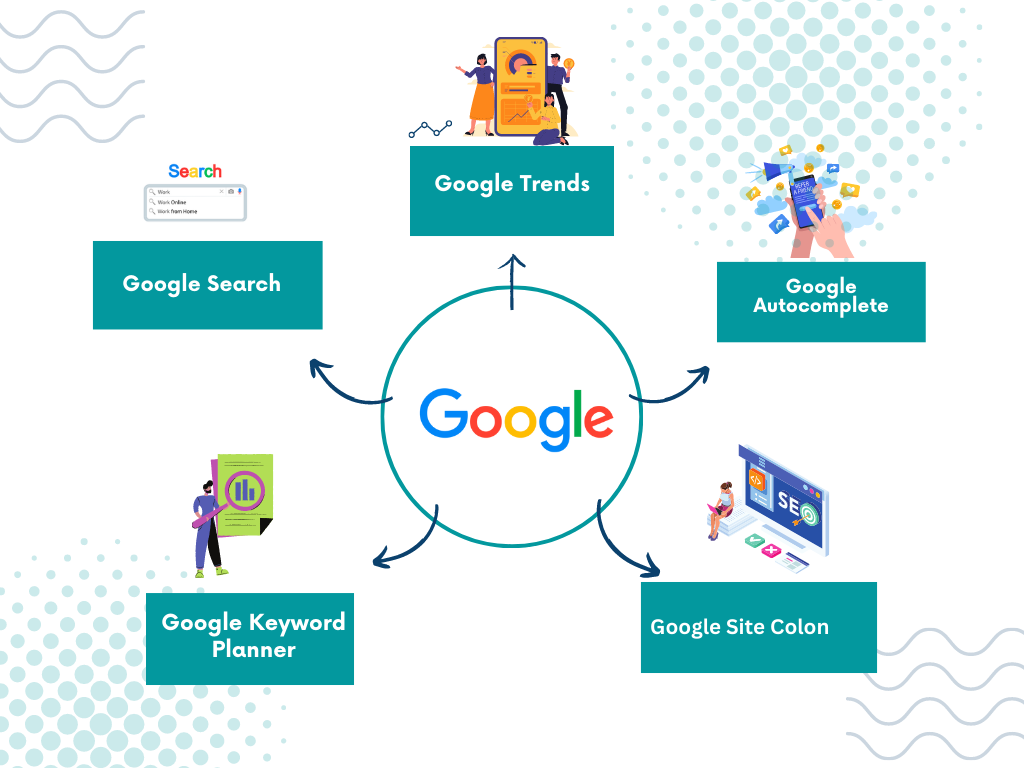The Ultimate Guide to Increasing Your SEO with Backlinks
Backlinks are like the secret handshake of the Internet. They’re the currency of the web, the social proof that your website is worth knowing about. And for good reason – backlinks are a crucial component of any SEO strategy. Many experts agree that backlinks can have a significant impact on your website’s visibility and traffic. But before you start creating backlinks willy-nilly, it’s essential to understand how they work and why they’re important for SEO. In this article, we’ll explore everything you need to know about backlinks, including the most effective strategies for building them and common myths you should avoid.


What are Backlinks?
When it comes to search engine optimization, backlinks are a key factor in determining a website’s visibility and credibility. Backlinks are essentially links from other websites that direct users to your website. These links signal to search engines that your website is a trustworthy and authoritative source of information. As a result, websites with a higher number of high-quality backlinks tend to rank higher in search engine results pages (SERPs). But the benefits of backlinks extend beyond just SEO. Backlinks can also drive referral traffic to your website, helping to increase brand awareness and engagement. In this article, we’ll explore everything you need to know about backlinks and how to effectively use them to improve your website’s visibility and traffic.


SERP
Search Engine Results Pages
How do Backlinks Work?
Backlinks are like 5-star reviews for a restaurant: the more 5-star ratings it boasts, the more credibility and new patrons it will gain. More patrons mean financial success and popularity. Similarly, when a website links to another website, it’s essentially telling search engines that the linked site is a good source of information related to the topic (the 5-star equivalent of our restaurant example). This helps search engines determine the ranking of a website, and the more backlinks a website has, the higher it will rank.
But backlinks don’t just help with SEO – they can also drive more traffic to your website. When someone visits a website that has a link to yours, they may be prompted to click on the link and go to your website. This can help you reach new audiences and get more visitors to your website.
Many experts agree that backlinks are an essential part of any website’s SEO strategy and can have a major impact on your website’s visibility and traffic. But before you start creating backlinks, it’s important to understand how they work and why they’re important for SEO.
Types of Backlinks
There are several types of backlinks, and each type has different benefits for SEO. Here are the main types of backlinks you should be aware of:
- Natural backlinks. Natural backlinks are links from other websites to yours that occur naturally. These links aren’t created by you, but rather by other websites that deem your content to be valuable and link to it.
- Editorial backlinks. Editorial backlinks are links from other websites to yours that you create yourself. This could be a link in a blog post or guest post or a link in an article you wrote on another website.
- Guest post backlinks. Guest post backlinks are links from other websites to yours that you create in exchange for a guest post on their website. This can be a great way to get quality backlinks and build relationships with other websites in your niche.
- Paid backlinks. Paid backlinks are links from other websites to yours that are purchased for a fee. This is a quick and easy way to get backlinks, but it’s not recommended as it can be seen as a form of link spamming.
Overall, there are several types of backlinks, and each type has its own benefits and drawbacks. It’s important to understand the different types of backlinks so that you can create an effective backlink profile.
Paid and Free Backlink Checkers
When it comes to researching and analyzing backlinks, there are several tools and services available to help you with valuable data about your own backlink profile, as well as your competitors’. Fortunately, there are free backlink checker tools that you can use to analyze your website’s backlink profile. These tools will show you the incoming links, page authority, and domain authority of each link. You can also use them to compare your website to your competitors and see which backlinks are helping them rank higher.
Another useful tool for researching backlinks is by doing Keyword Research. By finding out which keywords are most used by your competitors, you can identify the best opportunities for backlink building and continue to improve your backlink profile.
Below is a list of the best backlink checkers:
Ahrefs Backlink Checker
Ahrefs is a popular and powerful SEO tool that includes a backlink checker. It offers both free and paid versions. The free version allows you to see the top 100 backlinks to any website or URL, while the paid version gives you access to the full list of backlinks. Ahrefs is known for its accuracy and depth of data. However, its pricing can be a bit steep for some users.
Moz Link Explorer
Moz is another popular SEO tool that offers a backlink checker called Link Explorer. It has both free and paid versions. The free version allows you to see up to 10 backlinks per query, while the paid version gives you unlimited access. Moz is known for its ease of use and user-friendly interface. However, some users have reported inaccuracies in its data.
SEMrush Backlink Checker
SEMrush is a comprehensive SEO tool that includes a backlink checker. It offers both free and paid versions. The free version allows you to see up to 100 backlinks per domain, while the paid version gives you unlimited access. SEMrush is known for its versatility and range of features. However, some users have reported slow loading times.
Majestic Backlink Checker
Majestic is a backlink checker tool that offers both free and paid versions. The free version allows you to see the top 10 backlinks to any website or URL, while the paid version gives you access to the full list of backlinks. Majestic is known for its accuracy and reliability. However, its interface can be confusing for some users.
Google Search Console
Google Search Console is a free tool provided by Google that includes a backlink checker. It allows you to see which websites are linking to your website and which pages are getting the most links. Google Search Console is known for its reliability and integration with other Google tools. However, its data can be limited and may not show all backlinks. Google Analytics can help you to track your organic traffic, as well as the number of backlinks that your website has gained. This can help you to identify which backlinks are having the most impact on your SEO performance, allowing you to make any necessary changes or additions to your backlink profile. By following these steps, you can create an effective SEO backlink profile that continues to help your website’s performance in search engine rankings.
One of the best ways to check backlinks is by using a specific page. This is called “page-level backlink analysis.”
Page-Level Backlink Analysis
By doing a page-level backlink analysis, you can identify which links are bringing the most traffic and which ones are not helping your website. To make the process even easier, you can use a Google Sheets template to track your backlinks. This way, you can easily view the number of incoming links, page authority, and domain authority for each link.
In summary, there are many backlink checkers and testers available, both free and paid. Each tool has its pros and cons, such as accuracy, ease of use, and pricing. It’s important to choose the tool that best fits your needs and budget. By regularly monitoring your backlink profile, you can ensure that your website is getting the visibility, authority, and rankings it deserves.
Next, we’ll discuss another important component of backlinks: Anchor Text.
Anchor Text
Anchor text is a vital element of SEO that can have a significant impact on the success of your website. When used effectively, anchor text can help improve your website’s visibility and search engine rankings.
Anchor text is simply the clickable text within a hyperlink. It tells the search engines what the page being linked to is about. It can be a keyword, a phrase, or even a complete sentence. The text helps search engines understand the content of the page it is linking to.
Using anchor text strategically can improve the relevance and quality of your website’s links. For example, if you are linking to a page about SEO, it is beneficial to use the words “SEO” or “search engine optimization” as the anchor text. This tells the search engine that the page being linked to is relevant to the topic of SEO.
Below are some good and bad examples of anchor text.
Good Examples:
Descriptive anchor text: This type of anchor text provides a clear and accurate description of the content being linked. For example, “Check out our new line of running shoes” would be an effective anchor text for a link to a page selling running shoes.
Branded anchor text: This type of anchor text uses the name of a brand or company as the link text. For example, “Visit Nike’s website” would be a good use of branded anchor text to direct users to Nike’s official website.
Bad Examples:
Generic anchor text: This type of anchor text uses vague or generic language that doesn’t provide any context for the linked content. For example, “Click here” or “Read more” are poor choices for anchor text.
Keyword-stuffed anchor text: This type of anchor text uses overly-optimized keywords or phrases in an attempt to manipulate search engine rankings. For example, “Best running shoes for men – buy running shoes online” would be an example of keyword-stuffed anchor text, and it can be penalized by search engines.
One important thing to keep in mind is that your anchor text should be relevant to the content of the page you are linking to. If the anchor text does not accurately reflect the content of the page, it could be considered spammy and hurt your website’s search engine rankings.
It’s also important to use a variety of anchor text when building links to your website. Overuse of exact-match anchor text can be seen as manipulative and could lead to penalties from search engines.
Here are some tips for effectively using anchor text:
- Use relevant and descriptive anchor text that accurately describes the content of the linked page.
- Avoid using generic terms like “click here” or “read more” as anchor text. This does not provide any context to the search engine.
- Use a variety of anchor text to avoid overusing exact-match keywords.
- Be cautious about using too many links with exact-match anchor text. This could be seen as spammy and harm your website’s search engine rankings.
Overall, anchor text is a crucial aspect of SEO that should not be overlooked. By using relevant and descriptive anchor text, you can help search engines understand the content of your website and improve your search engine rankings. Anchor text, inbound links, and external links are essential for link building and improving your website’s SEO. When it comes to link building, having high-quality backlinks from authoritative websites is key.
Creating anchor text for your domain name and web page is an excellent way to improve your website’s visibility in search engines. It’s important to use relevant and descriptive anchor text that accurately reflects the content of your web page. It’s also important to create inbound and external links from authoritative websites to help improve your website’s rankings.
DoFollow NoFollow Links
When it comes to backlinks, there are two main types: dofollow and nofollow links. These types of links determine how search engines treat them and impact the overall SEO of a website.
Dofollow links are links that search engines consider as endorsements for the linked website. In other words, when a website links to another website using a dofollow link, it is essentially telling search engines that the linked website is trustworthy and valuable. As a result, dofollow links can have a positive impact on the SEO of the linked website.
Nofollow links, on the other hand, tell search engines not to follow the link and not to pass any SEO value to the linked website. Nofollow links are typically used for paid links, comments sections, or other links that the website owner does not want to be seen as an endorsement.
The examples below will provide more clarity.
Dofollow link example:
Let’s say a blogger writes an article about their favorite fitness apps and includes a link to a specific app’s website. If the blogger uses a dofollow link, it will tell search engines that the app’s website is trustworthy and valuable, which could help improve the website’s SEO.
Nofollow link example:
If the same blogger allows comments on their article and someone includes a link to their own fitness app in the comment section, the blogger might choose to make that link a nofollow link. This would ensure that search engines do not consider the link as an endorsement, but the commenter’s website can still be shared with readers.
Overall, understanding the difference between dofollow and nofollow links is important for website owners and marketers. While dofollow links can have a positive impact on SEO, it is essential to use them responsibly and not engage in any black hat SEO tactics, which can result in penalties from search engines.
The Importance of Having High-Quality Backlinks
To ensure your website’s success, it’s vital to build backlinks of the highest quality. High-quality backlinks from reputable websites are more valuable than low-quality backlinks from spammy sites. High-quality backlinks can help you rank higher in search engine results pages, reach new audiences, and establish yourself as an expert in your niche.
Low-quality links can drag your search engine rankings down, so make sure to watch them. Use a backlink checker to detect spammy links, and Google’s Disavow Tool to delete them. Content creation is also pivotal when building backlinks; make sure the content is relevant, high-quality, well-written, informative, and unique. Don’t forget to use relevant keywords, and link to other high-quality websites and pages. Finally, keep track of your backlink progress.
It’s also important to diversify your backlink profile. Don’t just focus on one type of backlink, as it’s important to have a variety of backlinks from different sources. This will help you create a strong backlink profile that will help you increase your website’s search engine rankings and visibility.
How to Create Backlinks
Now that you know what types of backlinks there are, let’s take a look at how to create them. Here are some tips for creating backlinks:
- Reach out to other websites in your niche. If you have quality content that’s relevant to other websites in your niche, reach out to them and ask if they’d be willing to link to your website.
- Write guest posts for other websites. Guest posting is a great way to get backlinks, as you can include a link to your website in your post. Just make sure that the website you’re guest posting for is relevant to your niche and has a good reputation.
- Create infographics or videos. Infographics and videos can be great backlinks, as they’re often shared on social media and linked to from other websites. To create a powerful backlink, make sure to use keywords in your infographic or video title and description.
- Participate in forums. Participating in forums and Q&A sites is a great way to get backlinks, as you can often include a link to your website in your post. Just make sure to provide helpful answers and be respectful of other people’s opinions.
Overall, there are several ways to create backlinks, and it’s important to find a strategy that works for you. With the right approach, you can create high-quality backlinks that will help you increase your website’s visibility and search engine rankings.
Once you know how to create backlinks, it’s time to start building your backlink profile.
Backlink Building Strategies
Here are some tips for building a strong backlink profile:
- Focus on quality over quantity. It’s important to focus on getting quality backlinks from reputable websites, rather than quantity from any website.
- Focus on organic backlinks. Organic backlinks are the most valuable, as they are seen as more natural and trustworthy.
- Use a variety of backlink types. Don’t just focus on one type of backlink, as it’s important to have a variety of backlinks from different sources.
- Monitor and track your backlinks. It’s important to keep track of your backlinks, as it will help you identify any issues or opportunities for improvement.
Overall, it’s important to have a solid backlink-building strategy in place. With the right strategy, you can create a strong backlink profile that will help you increase your website’s search engine rankings and visibility.
Common Backlink Mistakes to Avoid
When creating backlinks, it’s important to avoid making any mistakes that could hurt your website’s SEO. Here are some common backlink mistakes to avoid:
- Buying backlinks. Buying backlinks is seen as a form of link spamming, and it can hurt your website’s SEO.
- Linking to irrelevant websites. Make sure to only link to websites that are relevant to your niche, as linking to irrelevant websites can hurt your website’s SEO.
- Creating too many backlinks too quickly. Creating too many backlinks in a short period can make it look like your website is trying to manipulate search engine rankings, which can hurt your SEO.
- Linking to low-quality websites. Linking to low-quality websites can hurt your website’s reputation, so make sure to only link to trustworthy and reputable websites.
Overall, it’s important to avoid making any backlink mistakes that could hurt your website’s SEO. With the right approach, you can create high-quality backlinks that will help you increase your website’s search engine rankings.
How to Measure the Success of Your Backlinks
Once you’ve created your backlinks, it’s important to measure their success. Here are some tips for measuring the success of your backlinks:
- Monitor your website’s rankings. Track your website’s rankings on search engine results pages to see if your backlinks are having an impact.
- Track your website’s traffic. Monitor your website’s traffic to see if your backlinks are driving more visitors to your website.
- Monitor your website’s authority. Keep track of your website’s authority to see if your backlinks are helping you establish yourself as an expert in your niche.
- Monitor your website’s conversion rate. Track your website’s conversion rate to see if your backlinks are helping you convert more visitors into customers.
Overall, measuring the success of your backlinks is an important part of any website’s SEO strategy. With the right approach, you can track your backlinks and make sure that they’re helping you reach your goals.
Conclusion
Backlinks are a cornerstone of search engine optimization. They’re an essential part of any website’s strategy to improve its visibility and traffic. But it’s important to understand that not all backlinks are created equal. The quality of your backlinks is just as important as the quantity. A few high-quality backlinks from reputable websites can have a much greater impact on your SEO than a large number of low-quality links.
To build high-quality backlinks, it’s essential to focus on creating valuable content that other websites will want to link to. This could be anything from informative blog posts to detailed guides, videos, and infographics. By producing high-quality content, you can attract links naturally and build your website’s authority in the process.
Another effective strategy for building backlinks is outreach. This involves reaching out to other websites in your niche and asking them to link back to your content. This can be done through email, social media, or other communication channels. However, it’s important to approach outreach carefully and respectfully. Spammy or aggressive outreach can harm your website’s reputation and damage your chances of building high-quality links.
Lastly, it’s important to remember that building backlinks is a long-term strategy. It’s not something that can be accomplished overnight, and it requires consistent effort over time. But by focusing on quality over quantity and taking a strategic, thoughtful approach to your backlink strategy, you can improve your website’s SEO and drive more traffic to your site.
I would like to conclude with a simple backlinks’ ListLet:
Backlinks can…
1. Help boost your search engine rankings. By creating backlinks from other websites to yours, you’re telling search engines that your website is a good source of information related to the topic. This will help your website rank higher in search engine results pages.
2. Help you reach new audiences. By creating backlinks to your website, you’re giving people more opportunities to find your website. This can help you reach new audiences and get more visitors to your website.
3. Boost your website’s authority. When other websites link to yours, it shows that they trust your content and view your website as an authoritative source. This can help you build authority in your niche and establish yourself as an expert.






